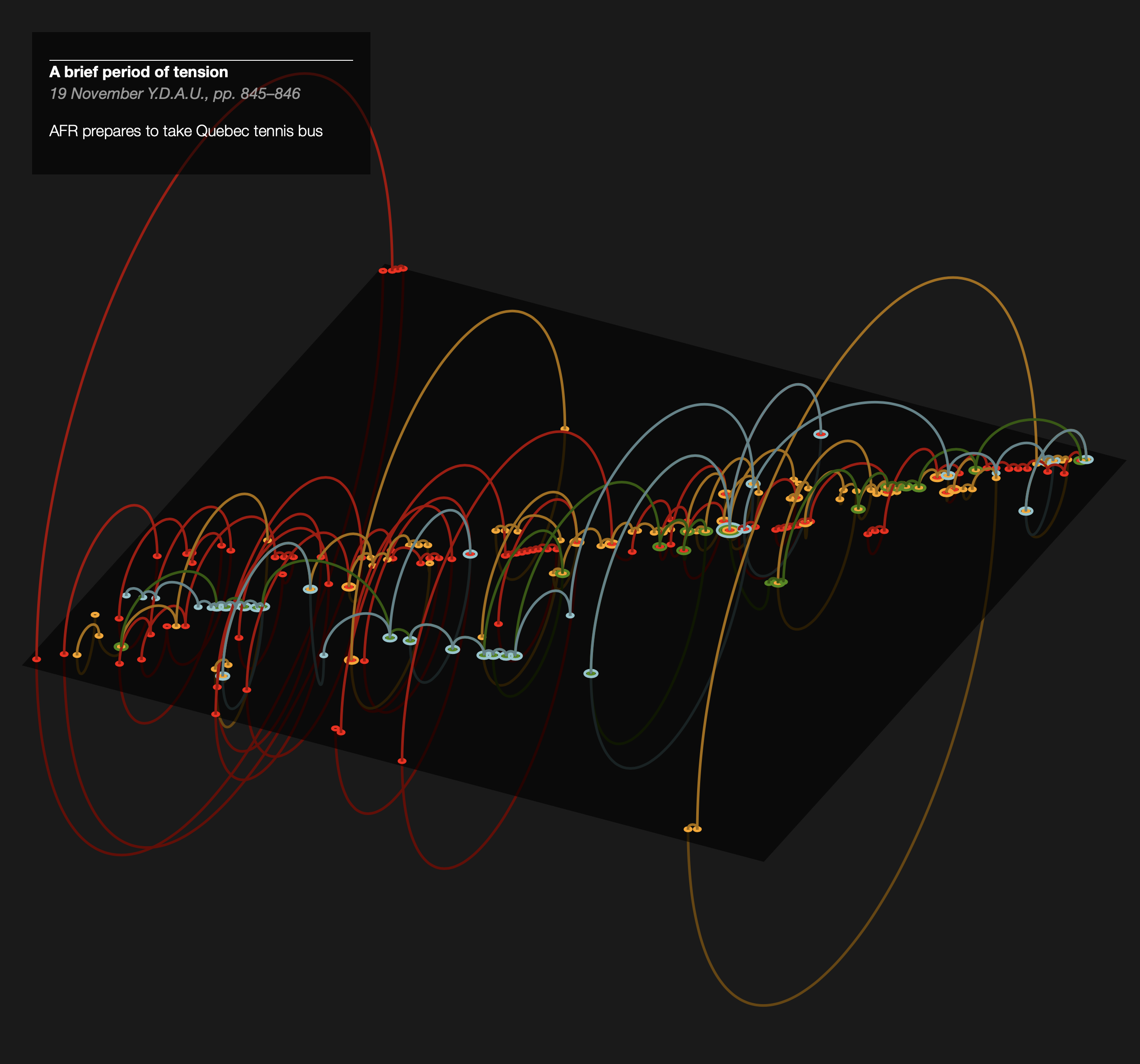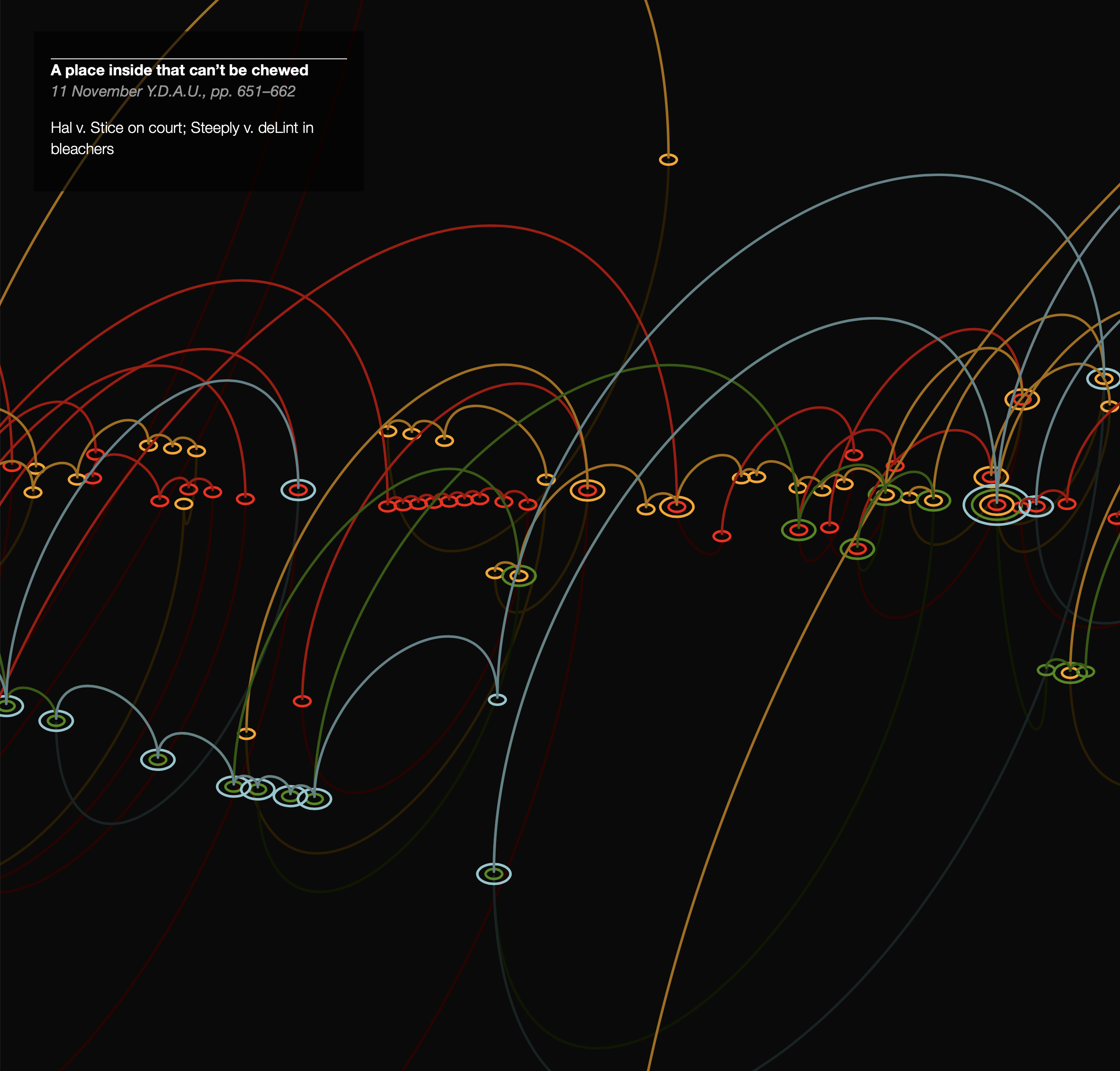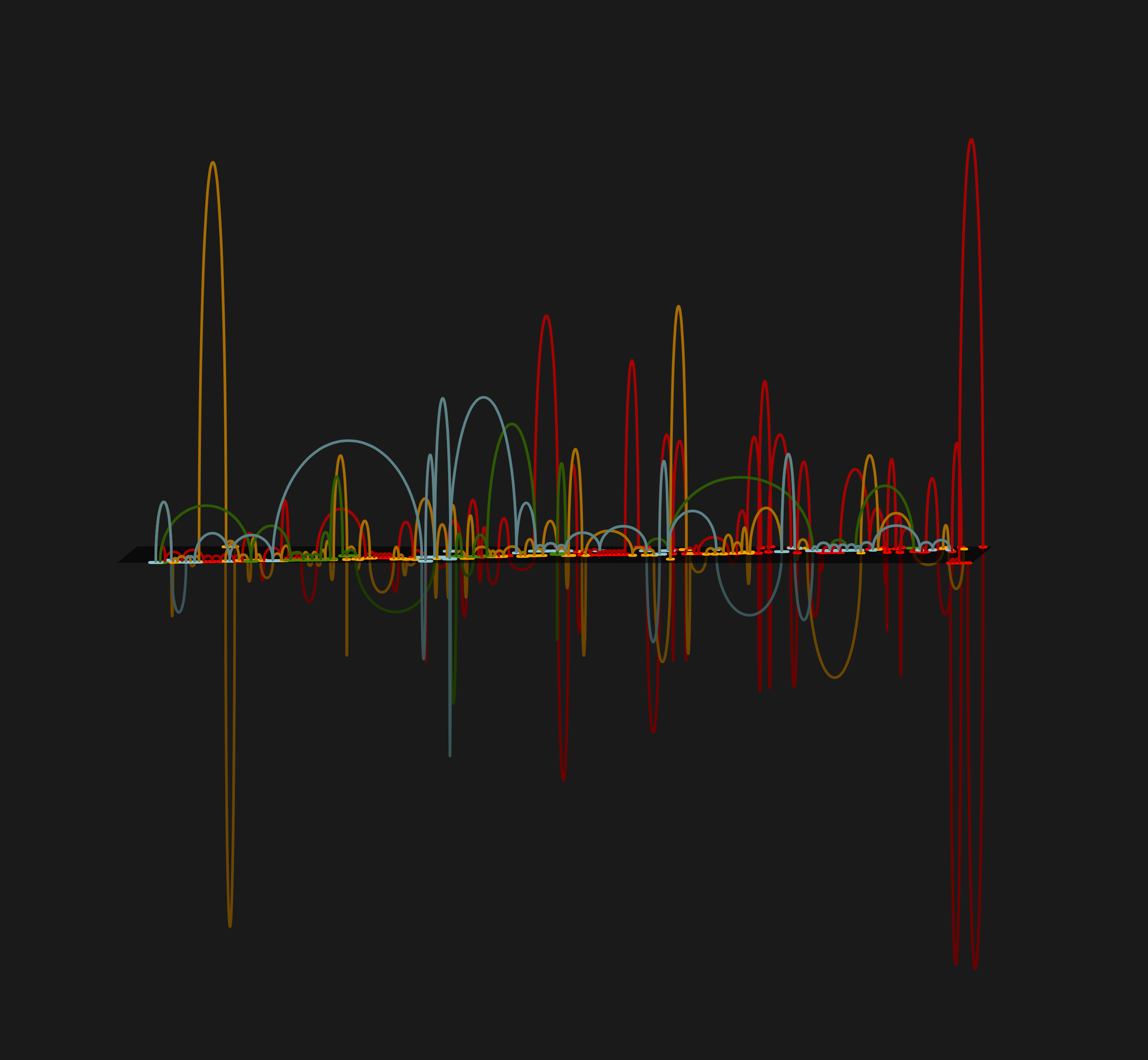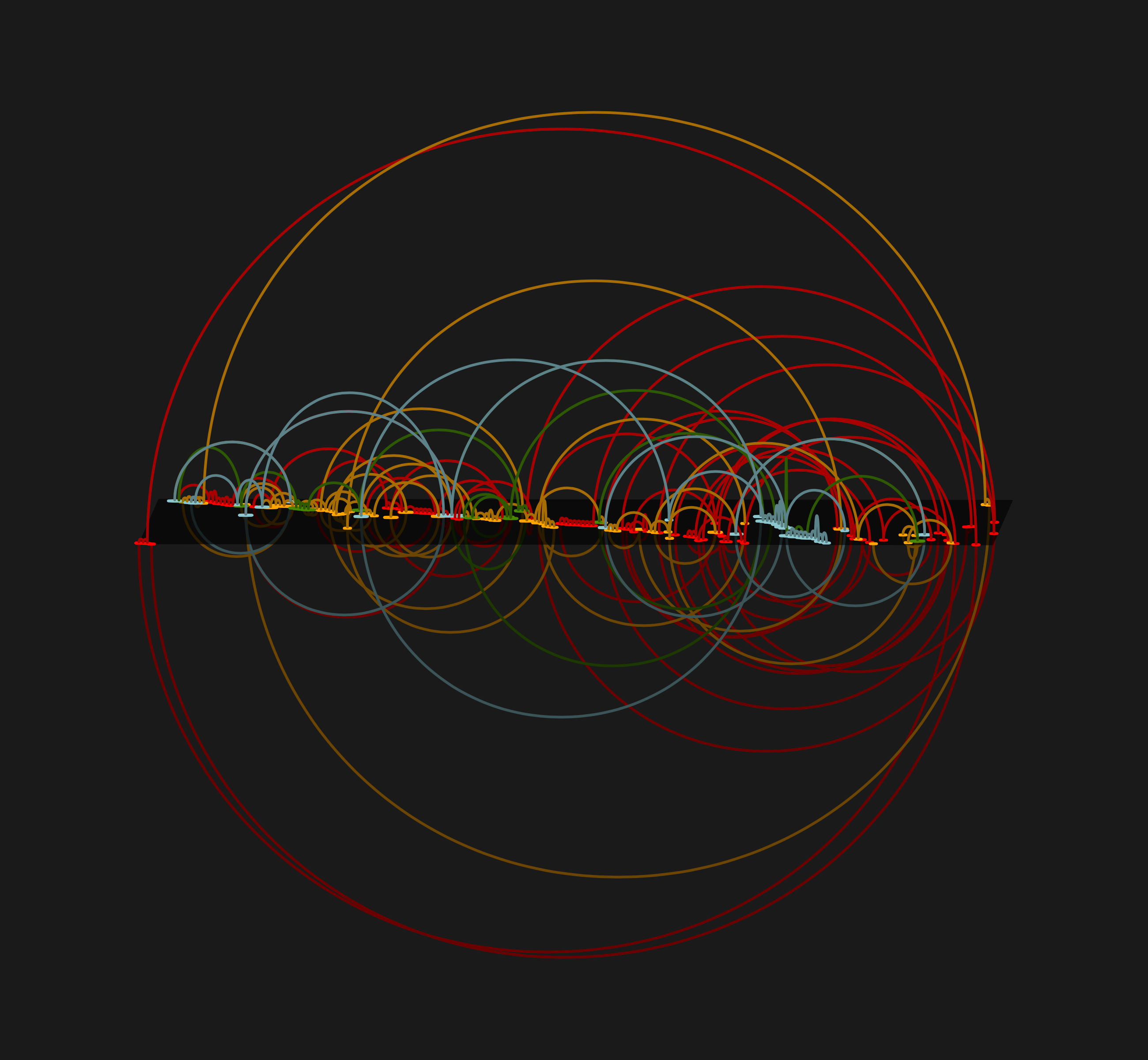An Open Book
Timelines
An episode-by-episode summary of the book’s numerous, brief ‘chapters’ with the colors indicating which of the four main ‘groups’ of characters are present. The chapters have been rearranged into chronological order and the arcs connect sequential events for each of the groups.
A more elaborate timeline which also incorporates the first and last appearances of the 34 most notable characters in the story. The vertical lines connect the various characters present in a given chapter.
Endnotes
The outer and inner arcs represent the pages of the novel and its endnotes respectively, each arranged consecutively from left to right. Each grey curve connects the page on which an endnote is referenced to the range of pages occupied by the endnote text.
Page Sequence
Each chapter is represented by a dot (or set of concentric rings) indicating the group-affiliations of all the characters present in the scene.


Screengrabs from an interactive 3D model of the original scatterplot diagram. Arcs trace the sequence of chapters each group appears in. Hovering on a chapter displays a brief summary of its contents.
Character arcs
Time progresses chronologically from the distant edge of the plane toward the viewer and page-order runs from left-to-right. The endnotes are drawn in grey at the rightmost edge of the plane.
The appearances made by the character are marked by dark horizontal lines with arcs showing the number of pages (forward or backward) the reader would need to flip in order to find the next episode in their story chronologically. If the character was merely mentioned in a scene, this is indicated with a ‘pin’ icon.
Social Networks
Characters are color-coded by group affiliation and positioned radially based on their number of appearances in the book. Lines indicate connections to other characters with whom they share a scene.
Character Interactions
Each character’s appearances are represented as a colored bar filling in each page on which they’re present, starting from the book’s first page on the left edge. Subsequent rows identify all characters they come in contact with. Highlights indicate where they share a scene.
Character Paths and Associations
The character’s appearances in the story’s chronology and narrative are marked as white dots connected by a colored line indicating their ‘group’ affiliation. The concentric rings around each chapter identify the number and group identity of other characters they interact with in that episode.

